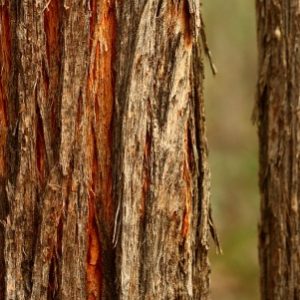Stringybark Honey

Stringybark – Eucalyptus macrorhyncha
Stringybark Eucalyptus Honey is a tart tasting, medium dark honey. The taste brings together the sweet eucalypts scent of a dry rising woodland in the poor soils of harsh country.

The Stringbark grows to 30m with a compact crown of green speer-shaped leaves. The white flower heads are arranged in groups of eleven and appear erratically anywhere from March to September.
This tree species provides a fantastic habitat. Flowers are a nectar source for many native insects, birds and mammals. The insects attract birds such as pardalotes, flycatchers, fantails, wrens, thornbills, honeyeaters and whistlers use bark for nesting material. Hollows close to ground-level are important nesting sites for Turquoise Parrot.
Only growing on the east coast of Australia, the Stringybark Honey is a very particular honey.
Health Properties of Stringybark Honey
The Stringybark tree produces a gum (Kino) that is Astringent. An astringent is a substance that checks the discharge of mucus, serum etc. by causing tissue shrinkage. The benefits include: close skin pores and reduce running noses.
Bees avidly collect gums and resins from trees which they leach into the honeycombs and honey. The resin swiftly converts to propolis – the top bee product for anti-bacterial and anti-oxidant power.
The leaves are a source of Flavondoids, which strengthens small blood vessel and capillary walls. Flavonoids are phytonutrients used by vegetables for their growth and defence against germs.
A Eucalyptus kino is used by Australian aborigines in a tea for treating colds.
Stringbark Honey is excellent for treating symptoms of colds to reduce running noses and sore throats. It is also excellent for treating skin damage.
